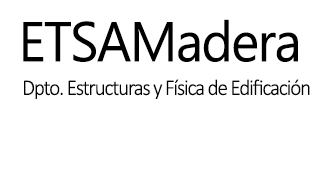
Abstract
Thermally modified timber (TMT) is timber with properties that have been altered because of the high temperatures to which it has been subjected. Due to its good durability, TMT is commonly used for non-structural purposes in outdoor environments, without additional chemical treatment. In this paper, the use of TMT as a structural material is considered. The work reported focused on beech, since earlier investigations about the mechanical behaviour of TMT have been oriented to softwoods. One of the most important changes in the mechanical properties of wood that thermal treatment produces is a significant increase in brittleness, manifesting itself, in particular, as a decrease in the strength in tension perpendicular to the grain. It is now well known that when dealing with tension perpendicular to the grain, fracture mechanics offers an effective tool for characterising wood failure (Gustafsson, 1992). In the work reported herein, the fracture of thermally modified beech wood under Mode I loading was quantified using Compact-Tension specimens under steady-state crack propagation conditions. The influence of three heat treatments and different fibre orientation (RL and TL crack growth systems) was studied. Complete load-displacement curves were evaluated and the specific fracture energy parameter, Gf, measured. Thermal modification was found to significantly affect the structural behaviour. The more severe the treatment, the lower the Gf.

